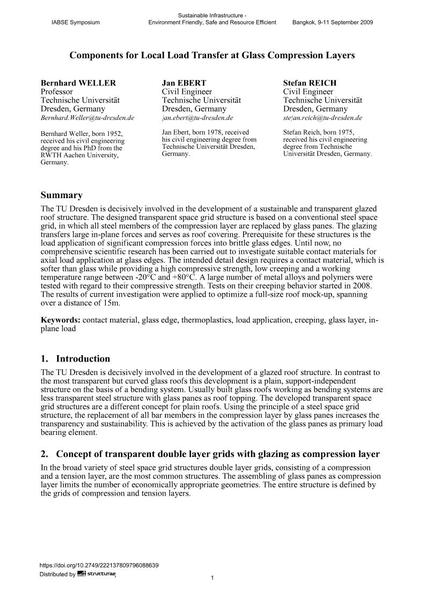Components for Local Load Transfer at Glass Compression Layers

|
|
|||||||||||
Bibliographic Details
| Author(s): |
Bernhard Weller
Jan Ebert Stefan Reich |
||||
|---|---|---|---|---|---|
| Medium: | conference paper | ||||
| Language(s): | English | ||||
| Conference: | IABSE Symposium: Sustainable Infrastructure - Environment Friendly, Safe and Resource Efficient, Bangkok, Thailand, 9-11 September 2009 | ||||
| Published in: | IABSE Symposium Bangkok 2009 | ||||
|
|||||
| Page(s): | 158-167 | ||||
| Total no. of pages: | 8 | ||||
| Year: | 2009 | ||||
| DOI: | 10.2749/222137809796088639 | ||||
| Abstract: |
The TU Dresden is decisively involved in the development of a sustainable and transparent glazed roof structure. The designed transparent space grid structure is based on a conventional steel space grid, in which all steel members of the compression layer are replaced by glass panes. The glazing transfers large in-plane forces and serves as roof covering. Prerequisite for these structures is the load application of significant compression forces into brittle glass edges. Until now, no comprehensive scientific research has been carried out to investigate suitable contact materials for axial load application at glass edges. The intended detail design requires a contact material, which is softer than glass while providing a high compressive strength, low creeping and a working temperature range between -20°C and +80°C. A large number of metal alloys and polymers were tested with regard to their compressive strength. Tests on their creeping behavior started in 2008. The results of current investigation were applied to optimize a full-size roof mock-up, spanning over a distance of 15m. |
||||
| Keywords: |
creeping glass edge contact material thermoplastics load application glass layer
|
||||
